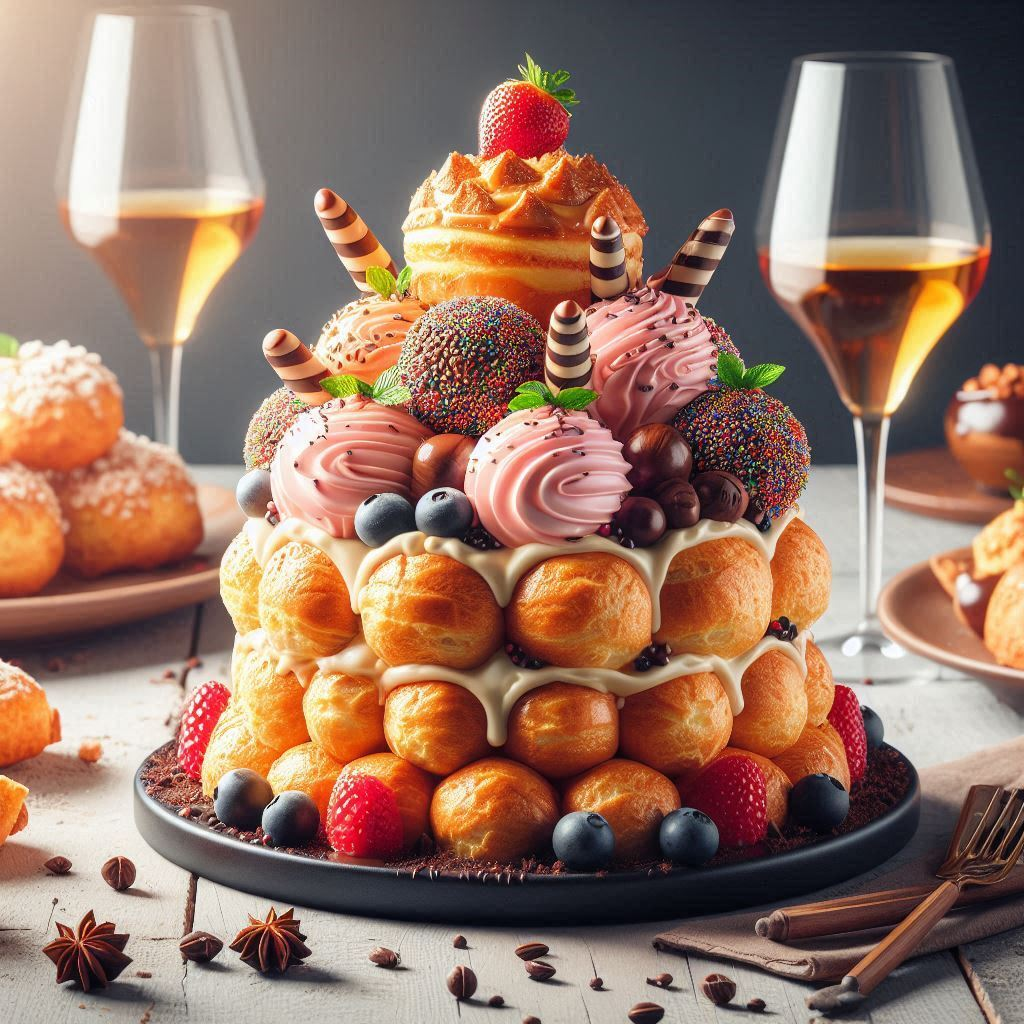
A Tower of Sweetness: The History and Art of the Croquembouche
The Croquembouche, a towering confection of golden, caramelized pastry puffs, is a dessert that embodies both elegance and whimsy. It’s a centerpiece at French celebrations, a testament to the artistry of pastry chefs, and a delicious journey through history and tradition.
From Humble Beginnings to Grand Occasions: The Croquembouche’s Journey
The origins of the Croquembouche can be traced back to the 16th century, where pastry puffs, known as “pâte à choux,” were a popular treat. These airy, light pastries were often filled with savory ingredients and served as a simple snack. However, the transition to a celebratory dessert began in the 17th century, with the introduction of the “boule de neige” (snowball) – a pastry puff dipped in sugar syrup.
The 18th century saw the evolution of the boule de neige into the Croquembouche, as pastry chefs began arranging these sugar-coated puffs into conical towers, often adorned with caramel and other decorations. This transformation coincided with the rise of elaborate desserts and the desire for visually stunning presentations in French cuisine.
The Croquembouche quickly became a symbol of wealth and celebration, gracing wedding receptions, christenings, and other special occasions. Its intricate construction and delicate flavors made it a masterpiece of pastry artistry, showcasing the skill and creativity of the chef.
A Symphony of Textures and Flavors: The Art of Croquembouche Preparation
Creating a Croquembouche is a meticulous process, requiring patience, precision, and a touch of culinary artistry. Here’s a glimpse into the steps involved:
1. The Foundation: The Pastry Puffs
The foundation of the Croquembouche lies in the pâte à choux. This versatile dough, made with flour, butter, eggs, and water, is cooked until it forms a smooth, elastic paste. The dough is then piped into small mounds and baked until golden brown and hollow.
2. The Caramel Glaze: A Sweet and Crunchy Coating
Once the pastry puffs are cooled, they are dipped in a caramel glaze, creating a crunchy, caramelized exterior. This glaze, made with sugar, water, and sometimes a touch of glucose, is cooked to a specific temperature, ensuring a smooth, glossy finish.
3. The Tower of Delight: Building the Croquembouche
The caramelized puffs are then carefully arranged into a conical tower, often with the assistance of a cone-shaped mold. The base of the tower is typically wider, gradually narrowing towards the top. This construction allows for a stable and visually appealing structure.
4. The Finishing Touches: A Symphony of Decoration
The final step involves adding decorative elements to the Croquembouche, elevating it from a simple dessert to a work of art. Popular decorations include:
- Chocolate: Drizzled chocolate, chocolate curls, or chocolate decorations add a touch of elegance and richness.
- Candied Fruits: Brightly colored candied fruits, such as cherries or apricots, add a burst of sweetness and visual appeal.
- Spiced Sugar: A sprinkle of cinnamon sugar or other spices adds a warm, aromatic dimension to the dessert.
- Edible Flowers: Delicate edible flowers, such as violets or pansies, add a touch of beauty and sophistication.
5. The Final Presentation: A Culinary Masterpiece
The finished Croquembouche is a masterpiece of culinary artistry, a testament to the skill and creativity of the pastry chef. It’s a dessert that delights the senses, with its crunchy caramelized exterior, airy pastry puffs, and sweet, flavorful fillings.
A Legacy of Sweetness: The Croquembouche Today
The Croquembouche remains a popular dessert in France and around the world, a symbol of celebration and a testament to the enduring power of pastry artistry. It’s a dessert that captures the imagination, evoking a sense of wonder and delight with its intricate construction and delicate flavors. Whether enjoyed at a wedding reception, a birthday party, or simply as a special treat, the Croquembouche is a timeless classic, a testament to the sweet side of French culinary heritage.



